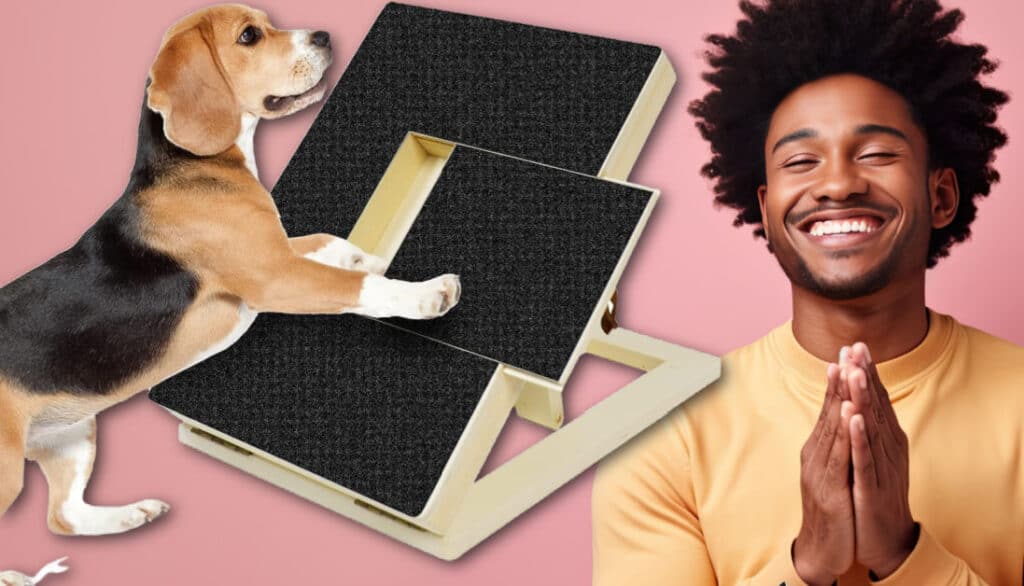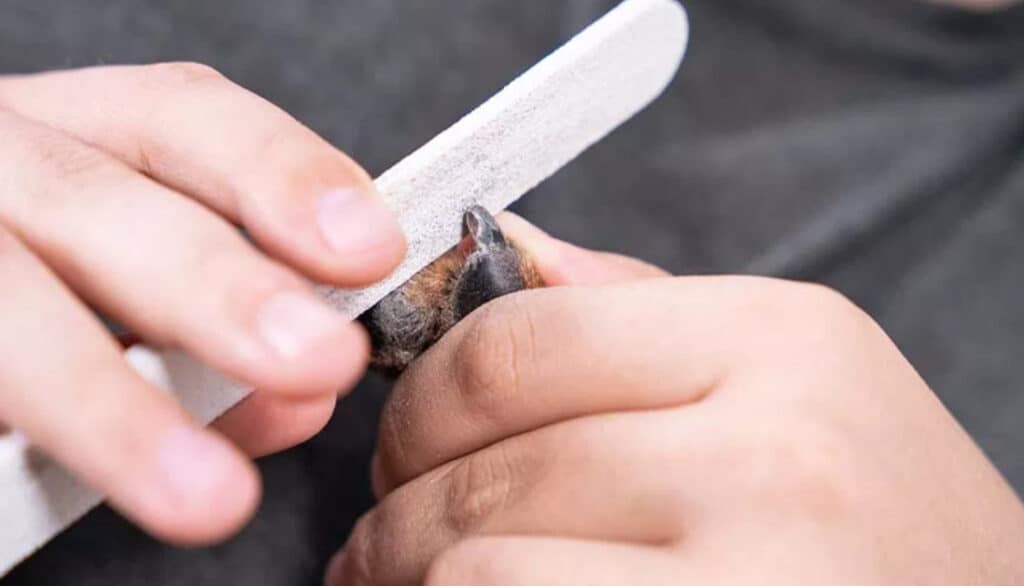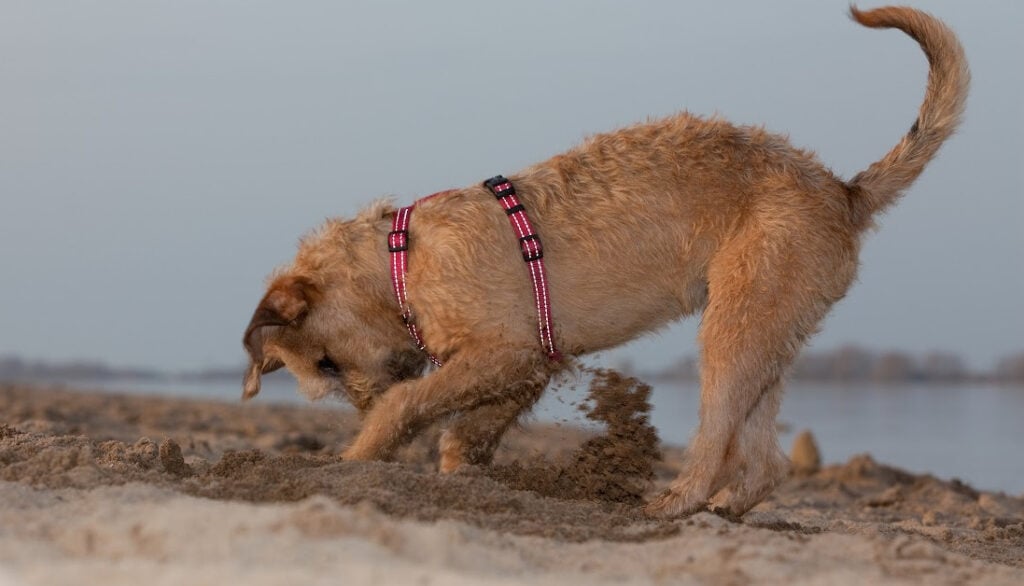As a devoted dog parent, you understand the importance of keeping your furry friend’s nails in check. But for many dogs, nail clipping can be a nerve-wracking experience, causing anxiety for both the pet and owner. You’re not alone in your search for a less stressful approach! Welcome to our comprehensive guide on “How To Keep Dog Nails Short Without Clipping.” Here, we delve into stress-free solutions that are not only gentle on your dog’s paws but also effective in maintaining their nail health. Whether you’re a new dog owner or a seasoned pet lover looking for alternative methods, this blog promises to offer insightful and practical tips for a happier, healthier pup. Dive in and discover a world where nail care becomes a breeze!

Long vs. Short Dog Nails – Which Is Better?
The length of your dog’s nails can significantly influence their comfort, health, and overall well-being. But is shorter always better? Or is there a reason some dogs might have longer nails? Let’s dive deep into the pros and cons of long vs. short dog nails.
Long Dog Nails
| Pros | Cons |
|---|---|
| Natural Protection: In certain terrains, longer nails can offer an added layer of protection against rough surfaces. | Discomfort and Pain: Long nails can cause a dog’s toes to splay or twist when they walk, leading to discomfort or even pain. |
| Less Frequent Maintenance: If your dog is terrified of nail trims, having slightly longer nails means less frequent nail-cutting sessions. | Increased Risk of Injury: Longer nails are more prone to splitting, breaking, or being torn off, especially during play or when caught in materials like carpets. |
| Posture and Joint Stress: Extended nails can affect a dog’s posture, leading to potential joint stress or issues over time. | |
| Noise: Longer nails can be noisy, especially on tile or hardwood floors. |
Short Dog Nails
| Pros | Cons |
|---|---|
| Comfort: Shorter nails ensure that your dog’s paws rest flat on the ground, providing more comfort when walking or running. | Over-trimming Risk: Cutting nails too short can lead to painful injuries or infections. |
| Reduced Risk of Injury: Short nails are less likely to get caught in things or break. | Frequent Maintenance: Keeping nails short means more regular trimming, which can be stressful for some dogs and their owners. |
| Better Posture: Proper nail length promotes better posture and reduces the risk of joint problems. | |
| Easier Play and Exploration: Short nails make it easier for dogs to play, explore, and dig without the risk of nail damage. |
While short dog nails tend to be better for the health and comfort of most dogs, it’s essential to strike a balance. Over-trimming can lead to its own set of problems. The key is to keep an eye on your dog’s nails, understand their specific needs, and aim for a length that ensures their comfort and safety. Always consult with your vet or a professional groomer if you’re unsure about the right nail length for your pup.

4 Ways To File Dog Nails Naturally
Every dog owner knows that regular nail maintenance is essential for their pet’s health and well-being. However, not all pups are fans of the traditional clippers or grinders. If you’ve been seeking a more natural approach that aligns with your dog’s instincts and minimizes stress, you’re in the right place! In this section, we’ll introduce you to four natural methods to help keep your dog’s nails filed and smooth. These techniques prioritize your dog’s comfort while ensuring their paws remain in tip-top shape. So, let’s explore these gentler alternatives together and find the best fit for your furry friend!
1. Walk Your Dog Regularly On Rough Surfaces
As dog owners, our daily walks are more than just a chance for our pups to stretch their legs and get some fresh air; they can also serve a dual purpose for natural nail care. Have you ever noticed how wild animals don’t seem to need nail trims? Nature has its own way of keeping things in check, and we can borrow a leaf from that book!
The Natural Pedicure
Walking your dog on rough surfaces, such as concrete or asphalt, can act as a natural file for their nails. Each step they take gently grinds down the nail, preventing it from getting too long. It’s nature’s pedicure, if you will!
Benefits of Rough Surfaces:
- Gradual Filing: Unlike clippers that might take off too much at once, the natural wear and tear from walking ensures a gradual and even filing. This reduces the risk of cutting into the quick.
- Less Stress: Many dogs dread the nail-clipping session. The mere sight of nail clippers can send them hiding. With regular walks on rough surfaces, the need for manual nail trims diminishes, ensuring a stress-free experience for both you and your pet.
- Promotes Healthy Joints and Muscles: Apart from nail care, walking on different terrains can also be great for your dog’s overall physical health. It helps in muscle development, joint flexibility, and even mental stimulation.
- No Extra Equipment Needed: No need to invest in grinders, clippers, or other tools. Your regular walk routine becomes a two-in-one activity: exercise and nail care.
A Few Points to Consider:
While walking on rough surfaces offers numerous benefits, it’s essential to strike a balance. Excessive walking on very abrasive terrains can lead to sore paws or even injuries. Always check your dog’s paw pads after walks to ensure they’re not cracked or injured. And, during the hotter months, be cautious of hot pavements which can burn your dog’s feet.
Incorporating rough surfaces into your regular walking routine is a natural and efficient way to maintain your dog’s nail length. It’s a simple change with noticeable benefits. However, always remember to keep your dog’s overall comfort in mind and adapt your walking routine to their specific needs. A happy dog is, after all, the ultimate goal!

2. Use a scratching post or pad
Most people associate scratching posts with cats, but guess what? Dogs can benefit from them too! While our feline friends primarily use scratching posts for marking territory and stretching, we can introduce similar tools to our canine companions for a different purpose: nail care. Let’s dive into how scratching posts and pads can be a game-changer for maintaining your dog’s nails.
Why Scratching Posts and Pads?
- Natural Behavior: Dogs often scratch at the ground, whether they’re trying to get comfortable before lying down or they’re engaging in instinctual behaviors. A scratching post or pad provides them with a designated place to indulge this instinct and, in the process, file their nails.
- Controlled Environment: Scratching pads are designed to be abrasive enough to file down nails without causing harm to the paw pads. It’s a controlled environment that ensures safety and effectiveness.
- Stress Reduction: Just as walking on rough surfaces reduces the need for manual nail trims, scratching pads can do the same. For dogs that get anxious with nail clippers, this can be a more relaxed and organic approach.
- Mental Stimulation: Figuring out how to use a new tool or toy can be a great mental exercise for dogs. The act of scratching can also be a stress reliever and a fun activity!
Setting It Up:
- Choose the Right Material: Make sure the post or pad is made of a material that’s rough enough to file down nails but not so abrasive that it could harm your dog. Sisal fabric is a popular choice.
- Placement is Key: Place the scratching post or pad in an area where your dog frequently spends time. You can also introduce it to them by placing their paws on it or using treats to guide their behavior.
- Encourage Use: Initially, your dog might be unsure about the new addition to their environment. Encourage them to use the post or pad by sprinkling some treats around it or using toys to guide their play towards the scratcher.
Points to Remember:
While scratching posts and pads can be an excellent tool for nail maintenance, they shouldn’t completely replace regular nail checks. Ensure you’re still monitoring your dog’s nail length and condition to ensure they’re at a healthy length and free from splits or injuries.
Scratching posts and pads are more than just cat accessories. With the right introduction and placement, they can be an invaluable addition to your dog’s nail care routine. They offer a natural, stress-free method that many dogs might find preferable to traditional nail-trimming tools. So, why not give it a try? Your dog might just thank you with happy, well-maintained paws!

3. Use an emery board
If you’ve ever filed your nails to achieve a smooth edge, you’re familiar with the wonders of an emery board. But have you considered using one for your furry friend? While it might sound unconventional, an emery board can be an excellent tool for gently maintaining your dog’s nails. Let’s explore how this common beauty tool can make its way into your dog’s grooming kit.
The Emery Board Advantage:
- Gentle and Precise: Unlike nail clippers, which can sometimes take off more than intended, an emery board offers precision. It gently files the nail, allowing you to achieve the desired length and shape without risking cutting into the quick.
- Perfect for Finishing Touches: Even if you use clippers or other tools for the bulk of the nail trimming, an emery board is perfect for smoothing out any rough edges.
- Reduced Anxiety: The quiet, gradual nature of the emery board can be less intimidating for dogs that are anxious about louder tools like grinders or the sudden pressure of clippers.
- Affordable and Easy to Replace: Emery boards are relatively inexpensive and can be easily replaced when they wear out.
How to Use:
- Get Your Dog Comfortable: Before diving in, ensure your dog is relaxed. Start by showing them the emery board and letting them sniff it. Reward them with treats to create a positive association.
- Gentle Strokes: Hold your dog’s paw firmly but gently. Using the emery board, file in one direction towards the tip of the nail. Avoid going back and forth too aggressively, as it can cause heat and discomfort.
- Take Breaks: Especially if it’s your first time, keep sessions short and give your dog plenty of breaks. Over time, as they become more accustomed, you can gradually increase the duration.
Things to Keep in Mind:
- Choose the Right Grit: Just like with human nails, you’ll want to pick the appropriate grit for your dog. Medium grit is typically suitable for most dogs.
- Keep It Clean: Regularly clean or replace your emery board to avoid bacterial buildup.
- Monitor Their Comfort: Always watch for signs of discomfort in your dog. If they seem stressed or agitated, take a break or try again another day.
An emery board might seem like an unlikely tool for dog nail care, but it can be incredibly effective when used correctly. It offers a gentle and precise method that many dogs and their owners might find preferable to other grooming tools. If you’re searching for a softer approach to nail maintenance, give the humble emery board a shot – both you and your pup might be pleasantly surprised!

Encourage Digging
If you’ve ever found yourself scolding your dog for digging up your garden, it might be time to see things from a different perspective. While unsightly holes in your flowerbed can be frustrating, digging is a natural canine behavior that, with the right guidance, can be beneficial for nail maintenance. Before you shake your head, let’s delve into how channeling this inherent behavior can help keep those paws prim and proper.
The Upside of Digging:
- Natural Nail Filing: As your dog digs, the dirt and grit naturally file their nails down. It’s a bit like nature’s manicure station, working wonders without the need for human intervention.
- Mental and Physical Stimulation: Digging can be both mentally and physically engaging for dogs. It provides them with a constructive outlet for pent-up energy and can help reduce unwanted behaviors born out of boredom or anxiety.
- Instinctual Behavior: Many dogs dig due to their ancestral instincts. By allowing and encouraging controlled digging, you’re helping them express this instinct in a safe and constructive manner.
Setting Up a Digging Zone:
- Pick the Spot: Instead of letting your dog choose the digging spot (and risk your prized roses), select a designated area in your garden or yard. This could be a sandbox or a specific patch of dirt.
- Make it Appealing: Bury some toys or treats to pique their interest. Over time, your dog will learn that this is their special digging spot.
- Positive Reinforcement: When your dog digs in the designated zone, reward them with praise, treats, or playtime. If they start digging elsewhere, gently redirect them back to their spot.
Considerations:
- Paw Health: While digging can be excellent for nail maintenance, ensure you’re checking your dog’s paws regularly. Ensure they’re not sore or injured, especially if they’ve been digging in harder, rocky soil.
- Clean Up: After a digging session, it’s a good idea to clean your dog’s paws. This will remove any dirt or debris and reduce the risk of them tracking dirt into your home.
While digging might have its downsides when done indiscriminately, it can be a fantastic, natural method for nail maintenance when channeled correctly. By setting boundaries and establishing a designated digging zone, you not only keep your pup’s nails in check but also give them an outlet for expression and exercise. It’s all about striking the right balance and understanding your furry friend’s innate needs and behaviors. Happy digging!

Conclusion
Maintaining our dogs’ nails isn’t merely an aesthetic choice; it’s a testament to their overall well-being and comfort. While traditional tools and methods have their place, it’s refreshing to know that nature offers us an array of gentle, instinctual methods for nail care. From regular walks on rugged terrains to encouraging our dogs to embrace their inner landscaper through digging, these methods are both beneficial and enjoyable.
Remember, it’s not about completely replacing one method with another but finding the right balance that suits both you and your furry friend. Experiment, observe, and adjust. By offering multiple avenues for nail maintenance, we’re not just catering to our pets’ physical needs but also acknowledging and respecting their natural behaviors.
So, the next time you see your dog happily digging away or eagerly walking on a rough path, you’ll know they’re not just indulging their instincts but also getting a natural ‘pawdicure.’ Here’s to happy paws and even happier tails!
Frequently Asked Questions (FAQs)
Absolutely! Long nails can cause discomfort, affect your dog’s walking posture, and even lead to joint problems. Regular maintenance ensures that your dog remains comfortable and healthy.
It largely depends on your dog’s activities and the methods you’re using for nail care. If you’re using natural methods like walking on rough surfaces or encouraging digging, a bi-weekly check should suffice. However, if you’re relying on traditional trimming, it’s advisable to check weekly or as needed.
Of course! Many dog owners find a balance between the two. For instance, regular walks on concrete can reduce the frequency of manual nail trims. It’s all about finding what works best for your pet.
Patience is key. Start by introducing any new tool or method gradually. Let your dog sniff and get accustomed to it without any pressure to use it immediately. Associating the tool with positive reinforcements like treats can help. Alternatively, focusing more on natural methods like digging or walking on abrasive surfaces might be less stressful for your pet.
While digging is an excellent natural way to wear down nails, it might not be uniform for all nails. Some nails, like the dewclaw, might not get the same wear and tear from digging. It’s essential to regularly check all the nails and ensure they’re at a comfortable and healthy length.
